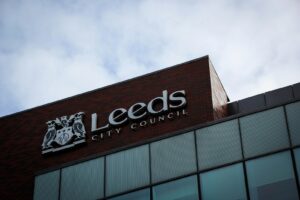Many areas need ‘place medicine’ but few are prepared to invest in it. Storm Cunningham sets out his vision for revitalised places and a programme for making it happen.
Many unsuccessful people avoid the risks needed to achieve their dreams because they fear failure. In cities and nations, similar anxieties might explain why our public leaders fail to shoot for revitalisation. They’ll promote projects with a tighter focus that fix roads, renew waterfronts, and restore historic buildings. But they won’t create a revitalisation program for the entire community, state, or nation.
Many folks are happy to work on a piece of the urban, rural, or environmental revitalisation puzzle. But we shy away from responsibility for the whole. If the place revitalises, we share the glory. If it doesn’t, it’s not our fault: we did our part. Fear of failure also explains why we can’t get a degree in revitalisation: academics perceive its complexity and worry that it isn’t understandable, so why risk studying it?
We’re all capable of tapping deep wellsprings of strength and creativity when those we love are in danger. Our economic, ecological, and social future depends on our doing so now. Our very survival might depend on it. Humans and wildlife worldwide are suffering as never before, and both are in graver danger than ever before. Do you love our children enough to risk raising your sights from merely slowing the rate of new damage, all the way up to restoring existing damage and revitalising our future?
Revitalisation is probably the largest and most important
global industry for which a corresponding profession has not yet emerged.
Politicians, planners, and developers: Let’s stop ignoring the elephant in the room. Devitalisation happens to all places at some time, and revitalisation is desired by most places at all times. So, why don’t community leaders take revitalisation more seriously? Why do most rely on hope?
Most public leaders will say they’re seriously working towards it, but when was the last time you met a public director of revitalisation? Or a Ph.D. in revitalisation? Or saw a substantial, ongoing public budget item with ‘revitalisation’ in its name?
So, if everyone wants revitalisation, why don’t we spend money directly on achieving it? Why don’t we manage it professionally? Why don’t we even know what the hell it is? Why is the prevalent paradigm ‘do a bunch of stuff and hope a miracle occurs’?
If revitalisation isn’t real, let’s stop wishing and working for it. Let’s go back to just fixing parts of our communities, and hope for the best. Let’s cease pretending we’re working towards the grand goal of creating resilient prosperity for healthy places, and reversing the downward spiral of distressed places.
If it is real, let’s end the magical thinking. Let’s make it a real discipline, with the requisite research, education, funding, and qualifications of a profession. Otherwise, we’re selling snake oil.
Revitalisation as ‘place medicine’
Revitalisation is probably the largest and most important global industry for which a corresponding profession has not yet emerged. The resulting lack of rigor and credentials is the direct cause of hundreds of billions of dollars of public and private investment worldwide being wasted annually. In our rapidly-urbanising world, the human and environmental consequences are severe, and are worsening.
Saying that redevelopment is real, but not revitalisation, is like saying that surgery is real, but not regaining health. Many folks renew and reuse historic buildings, or clean and redevelop brownfields, or restore watersheds or green space or improve public transport or make places more pedestrian-and-bicycle-friendly or activate vacant lots with community gardens and farmers’ markets. All contribute to revitalisation, but none are trained in revitalisation. Yet.
My new white paper describes four solutions to this problem:
- Define revitalisation
- Understand the revitalisation process
- Develop ways to measure revitalisation progress
- Create a revitalisation discipline and profession.
My current working definition: Revitalisation is a cycle of rising optimism, equitable prosperity, quality of life, and environmental health — usually triggered by renewing, reconnecting, and/ or repurposing distressed natural, built, socioeconomic, and human assets — often preceded by a cycle of devitalisation.
Revitalisation’s causes, effects, and flows tend to manifest in three ways:
- Extemporaneous: miscellaneous ‘fixers’ doing their thing on a purely opportunistic basis;
- Top-down (planned): often characterized by large ‘magic bullet projects;
- Bottom-up (self-organized): a neighbourhood-by-neighbourhood, citizen-led revitalisation process.
In places that successfully revitalised in a resilient, equitable manner, all three of these modes are usually evident; sometimes sequentially, other times simultaneously and (ideally) in harmony.
We can’t manage what we can’t measure. Revitalisation creates confidence in the future, and confidence in the future creates revitalisation. So, why not measure that confidence? When residents have confidence in a better local future, they’re less likely to move away from it, and more likely to work on improving it. When outsiders have it, they’re more likely to move there. When a relocating employer has it, they’re more likely to overlook weaknesses, trusting it will get better. When redevelopers have it, they see it as having bottomed-out, which means buy-low-sell-high opportunities.
When everyone is in charge, no one is in charge. Here are four reasons communities seldom have anyone in charge of revitalisation:
- It’s an emergent quality of a complex system, and thus not controllable;
- It’s too aspirational: many leaders and communities lack the courage to ‘shoot high’;
- It’s not a goal with an endpoint: Regeneration is a constant process of all healthy systems;
- It’s not a recognised discipline: We need a university to start making it one.
Making revitalisation happen
What would a revitalisation director do? Each local challenge would be unique but most would:
- Do leadership training in revitalisation practices;
- Create an ongoing revitalisation programme (not a project!). ‘Ongoing’ is key because regeneration is constant in all healthy living systems (cities, ecosystems, economies, immune systems, etc.). Stasis is not an option: if a place isn’t revitalising, it’s devitalising.
- Provide policy advice to make a place ‘fixer-friendly’. A downtown that wants to come back to life should make itself easier and more profitable to develop in than sprawl areas.
- Facilitate a shared vision of the desired future. A project is how one implements a plan. A plan is how one implements a strategy. And a strategy is how one implements a vision.
Whether a city or nation is moving ahead can be determined by what — and who — it is leaving behind. If it leaves contaminated land and vacant properties in its wake, it’s on the way down. If it leaves lower-income citizens homeless or hopeless, it’s on the way down. If it leaves restored or restorable assets, and increasing confidence in a future that benefits all, it’s on the way up.
So, is revitalisation a grand delusion with no substance, or an industry in need of a profession? When we look at a place transformed from dirty, hopeless, sickly, divided, and poor to clean, healthy, optimistic, harmonious, and prosperous, are we looking at something real? Yes. Is it a process others could learn from? Yes. Is it an activity that should be taken more seriously? Yes.
I’ve spent over a decade focused on regenerating places worldwide. I’ve seen them fail. I’ve seen them move towards an uncertain outcome. I’ve seen them succeed. I’ve been hired by dozens of local, state, and national governments to help them revitalise. But I’ve never met a director of revitalisation.
Revitalisation could be called ‘place medicine’, restoring wellness to communities, regions, and nations. But where are this medicine’s scientists? Where are its schools? Where are its general practitioners?
The first two acts of any new mayor, governor, or president should be: 1) appointing a revitalisation director, and 2) forming an ongoing revitalisation programme. It’s what citizens should demand. Today’s fuzzy campaign promises tend to all sound the same. A candidate who commits to those two specific acts would stand out. It would mark them as being serious about creating rapid, resilient renewal.
This revitalising revolution won’t be fomented by planning, development, and design professionals who are comfortable in their silos. It must come from the top. In a place with weak leaders, that means from the bottom. But why should citizens have to push so hard for what everyone wants: a revitalised future?
- This is extracted from a white paper by Storm Cunningham, chief executive of ReCitizen; author of The Restoration Economy, Rewealth, and Fixers: New Leaders for Broken Times (2015)
- The full text of the white paper from which this article was extracted can be found at http://stormcunningham.com/place-medicine
- Comments or questions? Email storm@recitizen.org
















Storm’s piece on “Revitalization: The missing role of government” is wonderfully attentive to the notion that all governments could potentially be an active participant of what’s glaringly missing on our planet, rapid, resilient, recurring renewal – except for one thing. We have no common way for people to be involved at any level, Federal, State or even a grassroots level, except perhaps within their neighborhood, to their local mayor – and good luck with that! In the category of “wouldn’t it be wonderful”…wouldn’t it be wonderful if on a national level we had a Revitalization Cabinet post where people could input their needs for recognition and action. It seems to me that might begin to turn our devitalized nation into a revitalized one – even my repeating that to myself sounds uplifting! I hope readers of this article will support Storm’s great Work and contact him with your support ideas and comments.
I like the focus on ‘revitalization’ but this all sounds like a newcomer to the party. There is a lot of material on the topic; this feels very superficial and ungrounded. I do not consider revitalization a ‘global industry’ and I certainly know that the makings of a real profession already exists, distinct from the ‘urban’ planners, Chamber of Commerce marketers, commercial real estate brokers/developers, politico/business/civic/academic/journalistic pundits — all of whom have NO practical, hands-on experience in our field. Where is our peer group in this discussion?
What we really need is to separate private sector revitalization from public sector revitalization; there is an intersection, but are not one and the same thing. One focuses upon private profits and ROI by means of the built environment while the other focuses upon human capital development – ‘moving the needle’ in socioeconomic terms. After all, massive amounts of public funds are used in the name of ‘economic development’, but where are the public goods? Why do we continue to live with structural, generational poverty and constrained upward mobility?
Instead of carving out another layer of bureaucracy to get excited about ‘revitalization’ (again), let’s make those with responsibility for results accountable, while also getting a grip on what transparent economic public policy can accomplish which has strategic consequences for the common good. Our ‘profession’ is at least 30 years old, where are the experienced hands on this topic?
Hello, Fernando:
You’re absolutely right that this article is superficial. It’s a very brief excerpt from a 23-page white paper.
You can find the complete white paper at http://www.stormcunningham.com/revitalization. I’d love to have your comments on that.
I can’t agree with your recommendation that we separate public from private revitalization, though. If your point is that there’s too much Big Money influence over local politics, leading to social, economic, and environmental injustices, I agree.
But the solution is more transparency and more integration, not more separation. Cities and regions are living systems: we need to stop working on their various parts as if they were unconnected from the others. Please let me know if the full white paper makes that point better than does this overview article.
Thanks very much! – Storm
By the way: If your point about separating public from private was actually the opposite of what I stated above, and you were saying that public leaders too often don’t understand what they are really trying to achieve, and that they often get in the way of excellent private efforts, then I agree with that, too.
But again: the solution is greater integration and transparency, not more separation.
As to the revitalization “profession” already being 30 years old, where’s your evidence? I’ve been researching and writing about this since 1996, and have yet to encounter a trained revitalization professional or revitalization agency that was using anything resembling a rigorous process. The projects are rigorously managed, I agree. But the programs? Not so much. Not at all, in fact.
Storm:
Your White Paper is too wordy & too confusing, but I do like that you are focusing on an important concept. How are we evaluating results? What has our experience taught us? What is the best methodology leveraging public resources with private ones? Are public officials seriously committed in closing the widening socioeconomic gaps or not? Do we have top notch professionals with actual experience or not?
What does “revitalization” mean in public sector terms, outputs or outcomes, where community needs are greatest? Revitalization cannot be confused with “economic growth” or “economic activity”. My hometown of San Antonio (1.3 million) is a case in point: we’ve had such economic “growth” & “revitalization” for 30 years yet we remain a “poor urban city”. Structurally, generational poor, & over $1billion spent in the name of “economic”, “community”, “workforce”, “business”, “minority”, & “urban” development. Wasted resources.
I’ve worked FT in the CED field since 1988, but even before that, I worked in the “community development” field in various roles, & over time, learned that practically everyone is vested in the status quo by seeking to fund a program but not seeking to make real impacts in standards-of-living or quality-of-life outcomes. The private sector has taken over the “economic development” field, funding their candidates for office who in turn, use “urban” planners to work hand-in-glove with the commercial real estate industry to build, build, build, creating over time a society of haves & have-nots. This is why I say that there isn’t such a thing as “private sector economic development” because E.D. is a public term, hence, we need to see public outcomes; we use private sector terms to describe the public construct. Consequently, we do not have economic development expertise on the public sector side of the equation.
We do not have the benchmarking metrics, we do not have a public commitment to “move the needle”, we do not have transparency, we do not have accountability, & we do not have true economic development specialists. I’m taking the liberty of editorializing & frowning on conventional views because over a long time of dedicated practice in the field as a consultant, readings, analysis, understanding how the private sector has taken over the public sector profession, adopting the Chamber of Commerce approach, I’m left to speak up & denounce false gods.
As a result of my experiences, I feel that I am walking on firm ground, with the knowledge that we have poor accountability & professional practice in the CED field. Yes, public-private-partnerships can work so long as we see concrete public goods, but in reality, we see very little return of investment using the public dollar.
In short, we’ve long needed to professionalize our profession, understanding that we are not urban planners & we do not work for the Chamber of Commerce, politicians, or business-civic leaders, & we are not mere pundits thinking out loud. We are practitioners who seek to actually “move the needle” in socioeconomic terms & to speak out against those who misrepresent us. And, I do know that there is a lot of good literature which simply needs to be organized into a functional whole, appropriate to our profession.
Thanks Storm.
Thanks for that feedback, Fernando. I’ve known San Antonio off-and-on since 1973, when I was stationed at Fort Sam, so I’m somewhat familiar with the trajectory it has taken.
I appreciate that you’re confirming the validity of the white paper’s points, and am not shocked that it has reached a point where you find it too long and confusing. I’ve been adding to it–often based on feedback from folks like yourself from all over the world–for about two months now.
While it’s still fresh in you mind, could you offer any feedback as to what sections could be cut, so as to shorten it, and how it might be restructured to be less confusing? I’d greatly appreciate any help you could offer.
Please email any feedback directly to storm@recitizen.org, so we don’t gunk-up New Start’s space here.
Cheers! – Storm